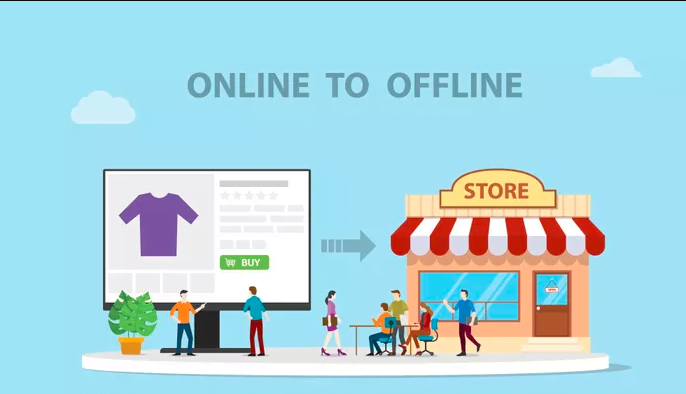Introduction
Suppose you are window shopping for a perfume of your favorite brand. You get to select one with a pretty bottle, compact design, good portability, and a long-lasting “Orris” fragrance. The initial descriptions fit perfectly well with your lifestyle but… Not having any idea about “Orris” puts you in a serious dilemma of whether to buy it or not! What would you think at that time? Won’t you feel like “How nice it would be if I could smell the fragrance directly or hold the perfume bottle in my hand?” This is the situation where you will desperately feel the need for an offline retail store of that brand.

There are multiple similar reasons why D2C brands are going offline mode. We will be covering below the various reasons responsible for this shift (while continuing their business on an online platform) through this article. So, here it goes.
What is D2C Business Model?
Before jumping into the explanation of the topic, it is necessary for you to have a clear idea about the D2C business model. The abbreviation “D2C” stands for Direct-to-Consumer. As the name suggests, it refers to the process where the company manufactures a product in its factory and distributes it through its channels.
You must have heard about the ayurvedic brand “Patanjali” right? Where do you find the Patanjali products? Of course in their retail stores. It is an example of a successful D2C business where it produces its product with proper research and development in its facility and distributes it through its brick-and-mortar stores.
Consider another brand “Nykaa” which used to manufacture its cosmetic products and sold them through its official online portal. But nowadays, you can see the retail stores of Nykaa in various parts of metro cities. This is the perfect example of a D2C brand that transformed its business from an online mode to an offline mode. However, it continues its online mode of business as well.
Reasons for Shifting to Offline Mode
Now you must be wondering that if the brands are already successful in their online markets, then what is the need to shift into an offline mode of retail markets? Even though digitalization is considered a key feature of modernization but it cannot beat the superior advantages of brick-and-mortar stores and retail markets. The following reasons are responsible for why the brands are shifting from online to offline mode-
- To acquire a large consumer base: Online marketplace is a virtual world for consumers where they can only see and read the description of the products. Do you remember the first example of the article about the perfume where you wanted to smell the fragrance before buying it? Not only you but there is a large group of people who want to touch, feel, and try the product before buying it. Various brands related to personal grooming, hygiene, cosmetics, apparel, accessories, footwear, etc. are opening offline retail outlets and distribution channels in major cities. The prime objective of these brands is to acquire a large consumer base.
- Higher Visibility: Do you remember the last advertisement that you saw on an online platform or social media? Probably not. In the online markets, a huge number of brands are flooding their advertisements. This dilutes the impact of a single brand on the mind of the consumer. If your favorite brand opens a retail outlet near your location. Then there is a higher probability that you will go there and purchase at least one product. The physical presence of the brands in the form of retail stores provides direct access to consumers. It confers higher visibility, therefore, getting the significant attention of the public.
- Brand Publicity: Another key reason for the online-to-offline mode transition of D2C business is to publicize the brand. A retail store of a brand publicizes itself. It will create awareness among the consumers even if people do not buy the products. It will indirectly influence the public to enter the store to buy the products.
- Bulk Purchase: In window shopping, people do not buy a lot of products from a single brand. Rather they love to explore different products. If the brand is not famous enough, then there is less chance of a bulk sale in online portals. Physical stores provide an effective solution to this problem. In retail stores, walk-in customers will see the products of a single brand. They will not have a choice to switch to another brand. Thus, brick-and-mortar stores aid in the bulk purchase of products by consumers. The diversification of brands into offline markets helps in scaling up sales.
Some Popular Online D2C Brands That Launched Offline Stores
Numerous D2C brands launched offline stores after getting satisfactory results in the online markets. Some of the popular brands are-
- Sugar Cosmetics
- Mamaearth
- Ed-a-Mamma
- Wakefit
- The Man Company
- The Woman’s Company
- True Elements
- Ozivia
Final Words
The setting up of physical stores helps the D2C brands to expand in the offline market. Along with the benefits of increased sales, their products will reach the remotest parts of the country. People who prefer offline shopping can explore the products. You will be able to try and test the products before making a purchase. It will also help the brands to know about the personal preferences of customers, weak points, strong points, etc. This will aid to deliver value-added services. It aids in the natural progression of the economy
